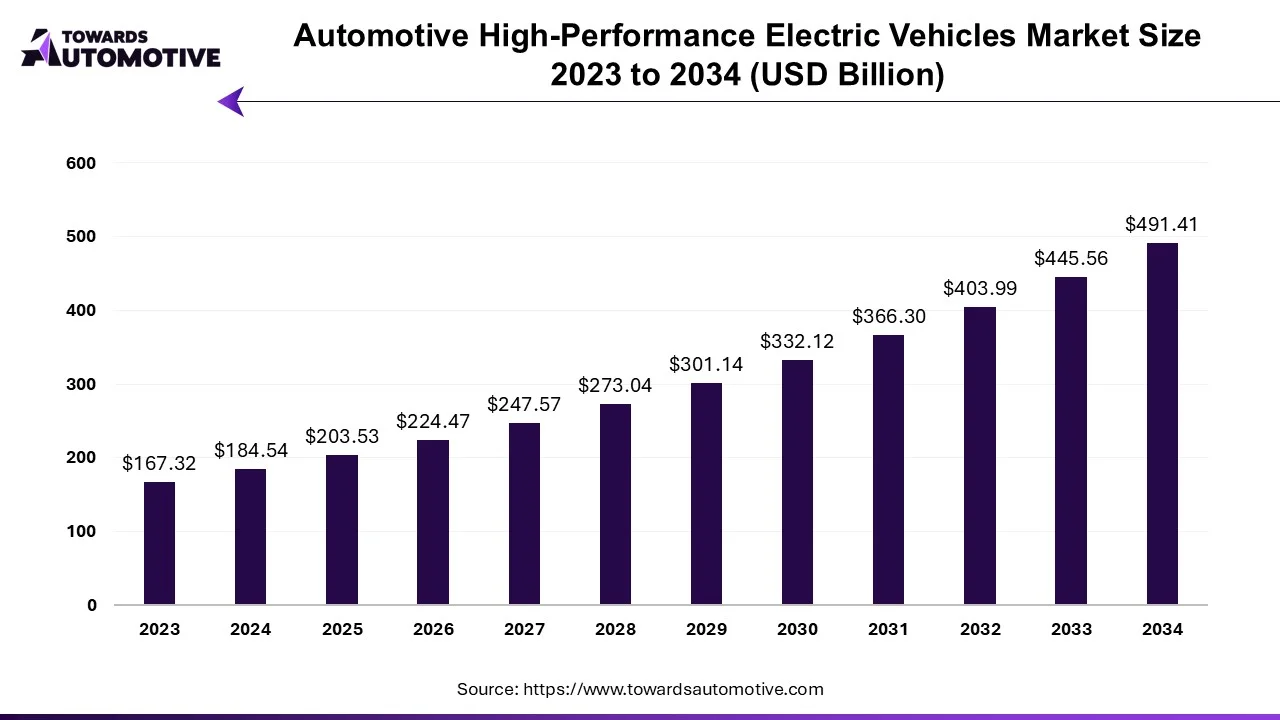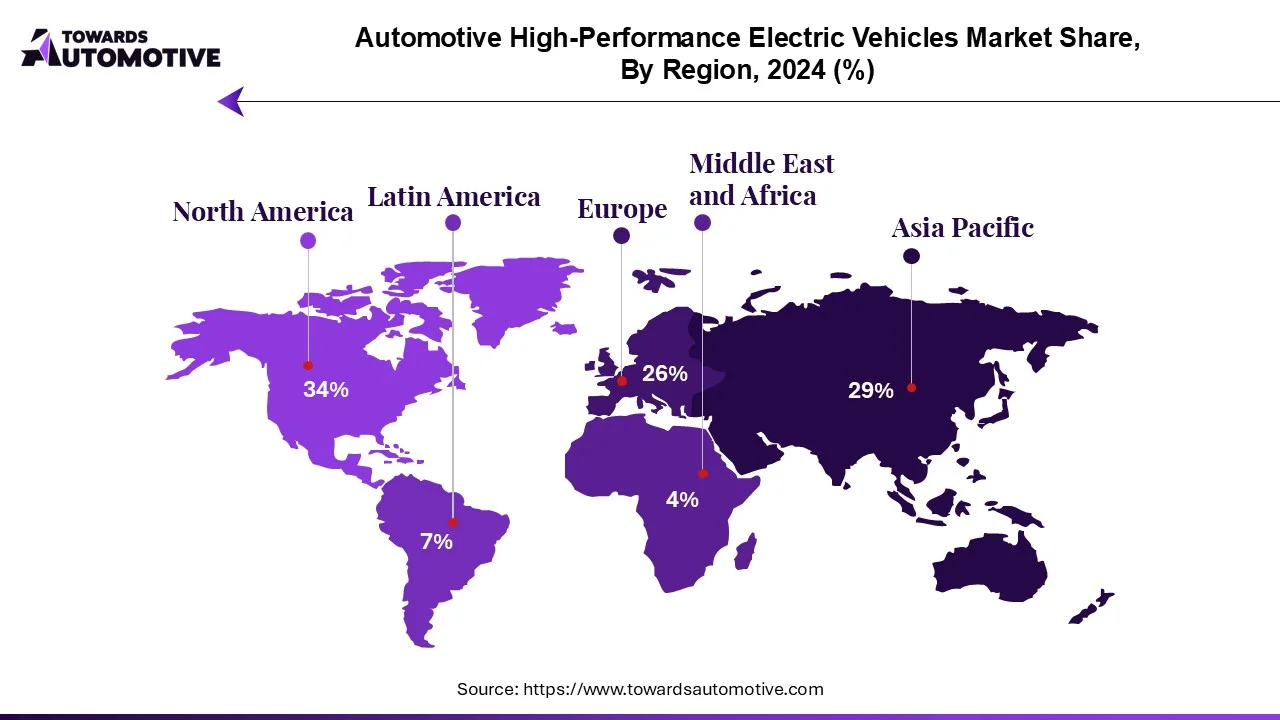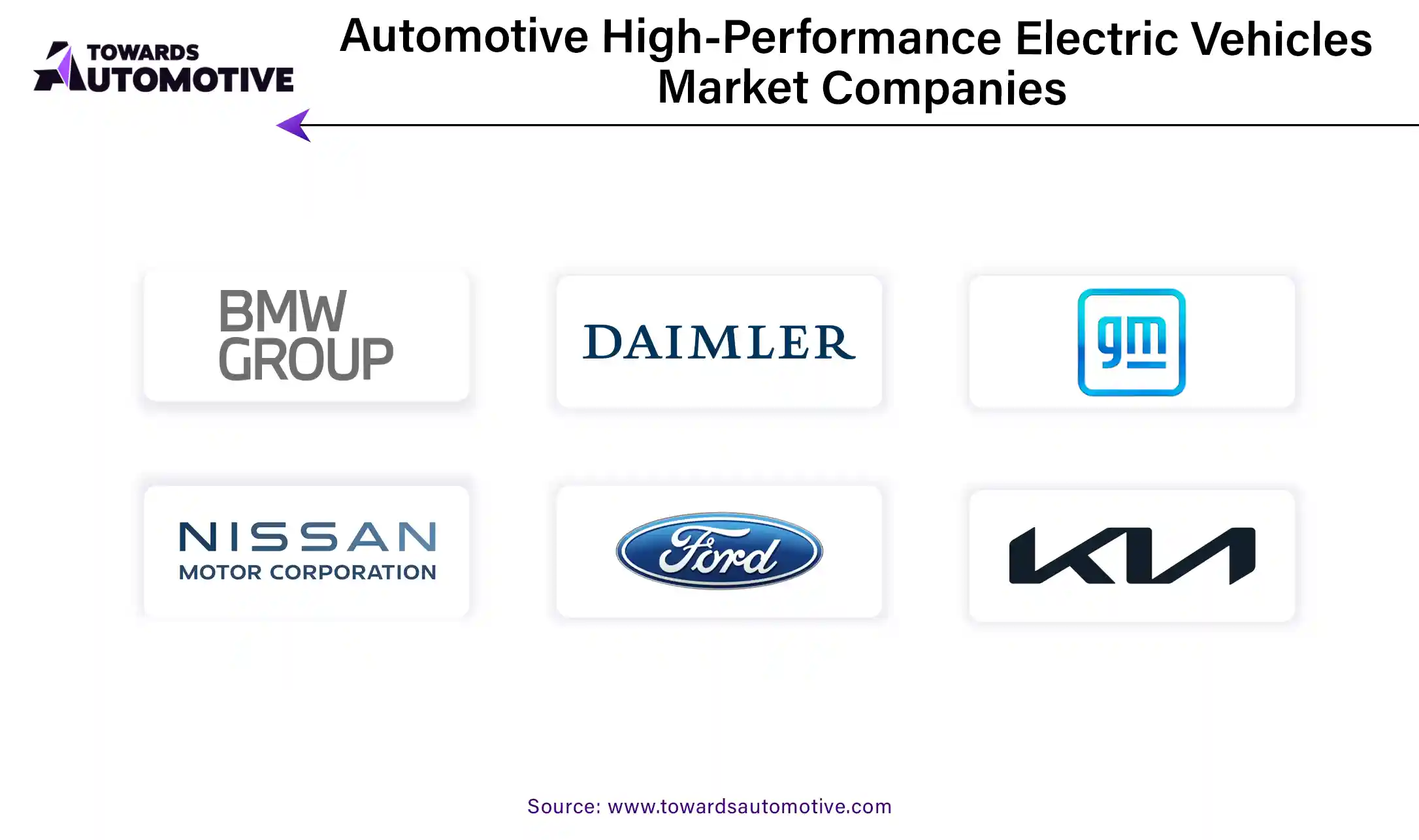The automotive high-performance electric vehicles market is projected to reach USD 491.41 billion by 2034, growing from USD 203.53 billion in 2025, at a CAGR of 10.29% during the forecast period from 2025 to 2034.

Unlock Infinite Advantages: Subscribe to Annual Membership
- The COVID-19 pandemic began to impact the growth of the electric vehicle market in the first half of 2020, as global lockdowns and travel restrictions prevented mass production of cars. However, the market is seeing significant growth in 2020, thanks to worldwide consumer awareness and support from government policies. Despite these challenges, the market is expected to experience substantial development during the forecast period, driven by environmental concerns and government initiatives.
- Increasing emissions, strict control of products such as emissions and fuel economy, and government support through incentives and incentives. The adoption of electric cars should stimulate the electric car market. Long-term needs and growth.
- Electric cars differ from other electric cars in that they can travel more than 150 kilometers on a single charge, accelerate faster than 90 mph, and can accelerate from 0 to 60 mph. Compared to electric cars. Getting up to 60 mph is quicker. While all-electric cars face issues such as limited range and weight, they benefit from the instant availability of electricity at the stop, unlike gas-powered cars. High-performance electric vehicles (EHPV) are powered by electricity and feature advanced EV electronics and lithium-ion battery capacity.
This section highlights the key business trends affecting the business electronics market analyzed by our researchers:
Developments that Improve the Performance of Electric Vehicles for Passengers
- The world's increasing need for energy-efficient and low-emission vehicles. However, banning the use of electric vehicles has been a major challenge hindering the expansion of the market. Original equipment manufacturers (OEMs) have solved this problem by producing electric vehicles that travel more than 200 miles on a single charge.
- Governments in the construction industry have encouraged the use of electric vehicles through financial benefits such as low registration fees, exemptions and exports. Purchase tax and tax deduction. In addition, incentive policies have been implemented to provide payments and subsidies.
- Passenger is a high-performance electrical work. Reasons driving this market include new car sales and increasing demand, especially among young people embracing new technology and luxury electric vehicles. Luxury manufacturers are trying to integrate advanced features into their cars to meet this demand.
- The government's raising public awareness about vehicle emissions, reducing the operating and maintenance costs of electric vehicles, and government officials' promotion of their use should help expand the electricity market widely, and it is going well.
- The electric vehicle market has experienced substantial growth in recent years; global electric vehicle sales are expected to reach 8.9 million units in 2021, achieving double-digit growth. By improving regulations to control emissions and promote zero-emission vehicles, European electric vehicle sales will increase by 40% of global electric vehicle sales in 2021. It accounts for more than.
- The electric vehicle market is expected to grow during the forecast period. Manufacturers and related businesses are increasing car sales in this segment by identifying electric vehicles as an attractive investment.

In the United States, the primary market for electric vehicles, significant changes are taking place in the number of vehicle electric vehicles. The presence of technology and electricity generation companies such as Tesla and General Motors and the participation of companies such as Nissan, Toyota, and BMW drives this change. Increasing consumer awareness about the environmental impact of internal combustion engines has also led to a steady increase in demand for electric vehicles in the country. The federal Internal Revenue Service (IRS) provides tax credits ranging from $2,500 to $7,500 for all new electric vehicles purchased in the United States.
The electric vehicle industry across the Asia-Pacific region has made significant progress in recent years. The country, known for its automobile production, is switching to electric vehicle production. Electric vehicles are becoming more popular as manufacturers focus on developing high-performance electric vehicles with advanced features, advanced driver assistance systems (ADAS), and improved highway capability compared to other electric vehicles.
China's Electrical Home Appliances Leader Electrical Home Appliances Electrical Home Appliances Electrical Home Appliances Electrical Home Appliances Electrical Home Appliances Electricity and the plan supported the development of the automobile industry, enabling the country to maintain its important position in the economy. In February 2021, private vehicle use increased from 20% two years ago to almost 70%. Electric car sales account for 60% of the city, with no restrictions on the growth of cars; This shows that China's electric car sales have the potential to grow further.
Many European governments have encouraged consumers to accept electricity through various activities. Cooperation between the government and the private sector focuses on battery electric vehicles and the promotion of environmentally friendly transport. Germany, home to major automobile manufacturers, leads the way in the use of electric vehicles in business and passenger transportation.
Automobile companies such as Daimler and Navista International. He often talks about the difficulty of replacing diesel engines with batteries. International organizations have forced the automotive industry and logistics companies to produce commercial vehicle batteries by following strict regulations and fuel industry standards.
For example,
- In September 2022, BMW Manufacturing built a new logistics center at its factory. The Spartanburg production facility emphasizes technology, environmental friendliness and efficiency. The facility, called Logistics Center X (LCX), covers an area of 1 million square meters and represents an investment of approximately $100 million. The plant supports the production of the plug-in hybrid electric BMW X model and the new BMW XM, the first high-performance electric powertrain in the BMW M series.
- Tesla, Daimler (Benz), BMW, Volkswagen, Hyundai, Nissan, and Chevrolet are leaders in the high-performance electric vehicle (EHPV) market. These original equipment manufacturers (OEMs) are focused on producing efficient electric vehicles in various sizes.
- Tesla pioneered the EHPV concept and actively supports and encourages its development. The company is committed to creating efficient and effective electric vehicles to drive the market. Tesla aims to increase customer satisfaction when building business supports such as power plants and service centers. However, challenges such as the high cost of ownership and payment shortage in many areas may hinder the market's growth during the forecast period.
- Commercial companies continue to invest in technological development to accelerate the commercialization of efficient electric vehicles. For example, in September 2022, Volkswagen launched the ID XTREME, an all-electric concept car based on the ID.4 GTX. The concept combines the functionality of a modern SUV with the robustness of an off-road vehicle, resulting in a system that is approximately 30% more powerful than the ID.4 GTX. The power increase is achieved by improving the power management software, high performance of the rear, and power from 65 kW to 285 kW.

- BMW Group
- Daimler AG
- General Motors
- Nissan Motor Company Ltd
- Ford Motor Company
- Renault
- Rimac Automobili
- Telsa Inc.
- Kia Motor Corporation
- Mitsubishi Motors Corporation
- Peugeot
- Volkswagen AG
- In September 2022, General Motors announced a $760 million investment in its manufacturing operations in Toledo, Ohio. The investment brings GM's total investment in the Toledo plant since 2011 to more than $1.9 billion. Toledo Propulsion Plant will continue to produce transmissions and drivetrains as General Motors transitions to electric vehicles. GM's Toledo-based EV powertrains will feature four-wheel drive, front-wheel drive, and rear-wheel drive configurations, as well as high performance and off-road capability.
- Also, in September 2022, BMW Group announced the performance hybrid car BMW XM. The wheelbase of the BMW BMW An electric motor integrated into the eight-speed M Steptronic transmission supports the engine, and the M hybrid button on the center console allows one of three operating modes to be selected.
- In January 2022, STI E-RA launched the STI E-RA electric car at the Tokyo Automobile Salon. The concept car provides STI with a platform to gain knowledge and training in developing new technologies for the future electric vehicle. The STI E-RA uses "four-wheel control technology" to improve rideability, handling, and stability. The STI E-RA is powered by a lithium-ion battery with a capacity of 60 kW and uses a motor developed by Yamaha.
A High-Performance Electric Vehicle (EHPV) is an electric vehicle that can travel more than 150 miles on a single charge, accelerate to more than 90 miles per hour, and accelerate from 0 to 60 miles per hour in less time.
The high-performance electric vehicle market is segmented by drive type, including plug-in and battery-powered or fully electric vehicles, and by vehicle type, including passenger and commercial vehicles. The market is geographically segmented into North America, Europe, Asia Pacific, and the Rest of the World.
Market Segmentation
By Drive Type
- Plug-in Hybrid
- Pure Electric
By Vehicle Type
- Passenger Cars
- Commercial Vehicles
By Geography
- North America
- United States
- Canada
- Rest of North America
- Asia-Pacific
- China
- Japan
- India
- South Korea
- Rest of Asia-Pacific
- Europe
- Germany
- United Kingdom
- France
- Italy
- Rest of Europe
- Latin America
- Brazil
- Rest of Latin America
- Middle-East and Africa
- South Africa
- Rest of Middle-East and Africa


